Traffic Calming Measures
Traffic calming is defined as the combination of physical measures such as speed humps, raised crosswalks, curb bump-outs, chicanes that may reduce vehicular speeds, alter motorist behaviour and improve safety for pedestrians/cyclists.
Traffic Calming Measures
Traffic calming measures refer to physical features and road designs to
- reduce vehicular speeds.
- reduce the number and severity of collisions.
- improve pedestrian and cyclist safety.
- improve the quality of the environment.
- potentially reduce traffic volumes.
Traffic calming measures can take many forms to slow vehicular speed and create safer roads. This can include the development or installation of curb and sidewalk extensions, roundabouts, narrowed roads, raised crosswalks at intersections, pavement markings, flexi-posts or streetscaping.
Traffic calming measures come in two primary forms: horizontal and vertical.
Horizontal traffic calming measures
Horizontal traffic calming measures physically or psychologically affect motorists and are somewhat effective in reducing traffic speeds.
| Type of measure | Physical features | What it looks like |
|---|---|---|
| Chicane | A chicane is a curb bump-out which alternates from one side of the street to the other, forcing motorists to follow the curvature, which slows vehicle speed. | Image
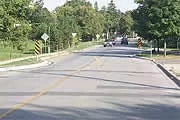
|
| Curb extension or road narrowing | A curb extension or road narrowing is an intrusion of the curb into the roadway, either at or between intersections. This measure reduces the roadway's width and shortens pedestrians' crossing distances. | Image
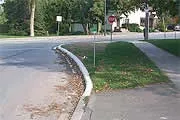
|
| Media island | A median island is a raised section between opposing lanes of traffic. | Image
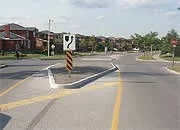
|
| Roundabout | A roundabout is a type of circular intersection with a raised island. Traffic is directed to flow in one direction. To learn more, visit york.ca/roundabouts. | Image
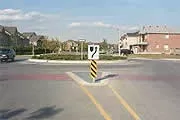
|
| Traffic circles | Traffic circles are smaller in diameter that roundabouts and are used in low-speed and low-volume residential areas. | Image
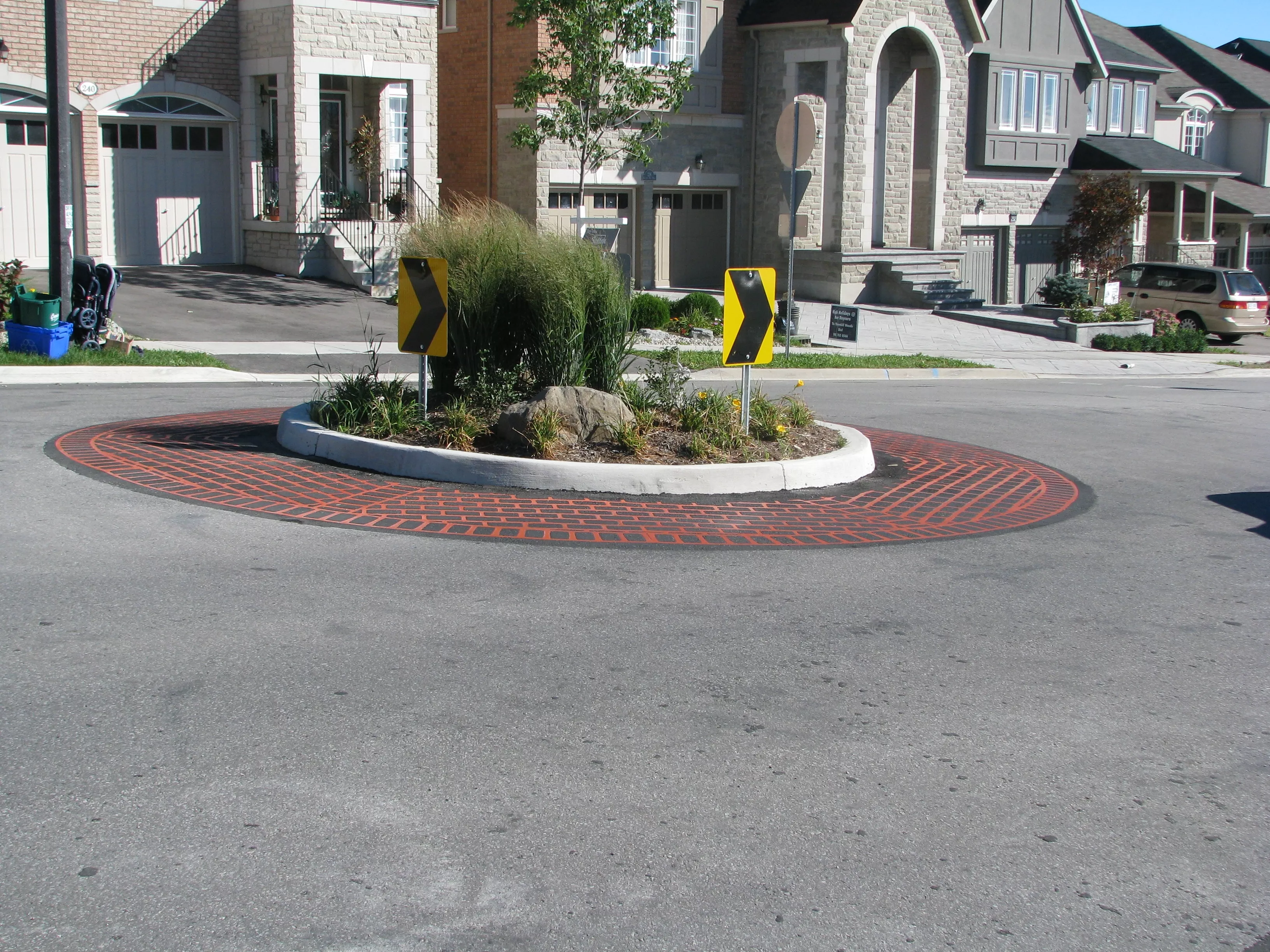
|
Vertical traffic calming measures
Vertical traffic calming measures physically affect motorists and their vehicles and are usually the most effective at reducing traffic speeds.
| Type of measure | Physical features | What it looks like |
|---|---|---|
| Raised crosswalk or intersection | A raised crosswalk or intersection has a flat, raised area and often incorporates textured materials or bricks. | Image
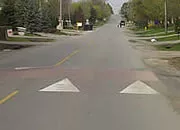
|
| Speed hump | A speed hump is a raised area of pavement used between intersections. | Image
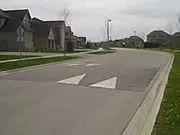
|
Speed management tools
Traffic calming includes speed management tools, such as textured crosswalks, pavement marking edge lines, in-road flexible signs, speed display signs or warning signs. These tools act as a visual guide for motorists and are effective at reducing traffic speeds.
| Type of measure | Physical features | What it looks like |
|---|---|---|
| Edge line (urban shoulders) | White edge lines are typically installed along roadways to designate an “urban shoulder” which results in narrow travel lane widths to calm traffic, facilitate on-street parking and accommodate non-motorized traffic. | Image
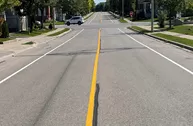
|
| In-road flexible sign (flexi-post) | In-road flexible signs are speed signs installed in the centre of the road. | Image
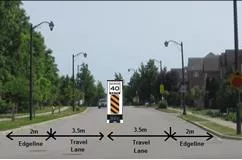
|
| Textured crosswalks | Textured crosswalks can include coloured impressed concrete patterns at an intersection. | Image
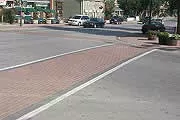
|
| Transverse markings | Transverse markings (including crosswalks) enhance the visibility of pedestrian crossing locations. | Image
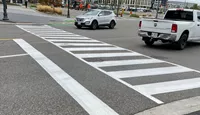
|
| Speed display boards | Speed boards are an effective educational tool to raise awareness of a driver’s speed and encourage speed compliance. | Image
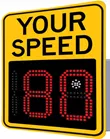
|
| Warning sign | Warning signs are metal road signs that caution drivers of the area they are entering, such as “Pedestrian Ahead” and “Playground Ahead." | Image
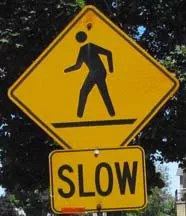
|
To request or report an issue with neighbourhood traffic calming, please contact Service Vaughan at service@vaughan.ca or 905-832-2281. You may also make reports and requests online:
